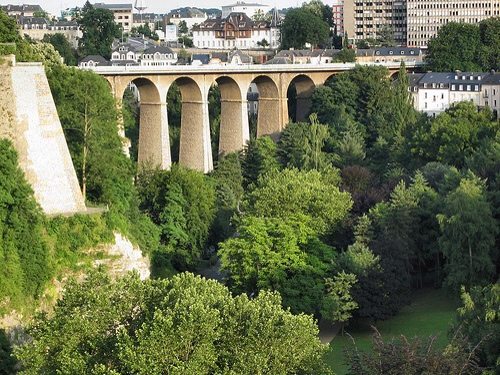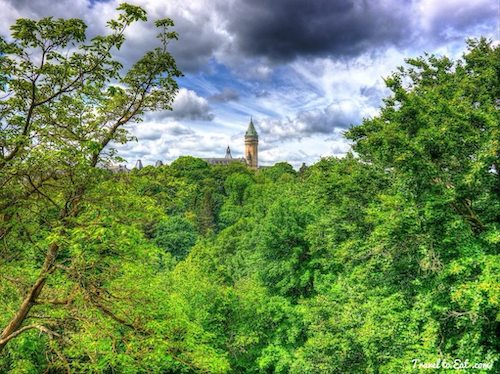
Lisa and I decided to take a day trip from Paris to Luxembourg, just because we had never met anyone who had been there. Luxembourg is a tiny landlocked city in the center of Europe. The city center occupies a picturesque site perched high on precipitous cliffs that drop into the narrow valleys of the Alzette and Pétrusse rivers, whose confluence is in Luxembourg City. The 70 m (230 ft) deep gorges cut by the rivers are spanned by many bridges and viaducts, including the Adolphe Bridge, the Grand Duchess Charlotte Bridge (Red Bridge), and the Passerelle. Although Luxembourg City is not particularly large, its layout is complex, as the city is set on several levels, straddling hills and dropping into the two gorges. If you actually want to see the city, be prepared for a lot of hiking and stairs. Our visit was cut short by the information that cameras are not allowed in any Luxembourg museums.
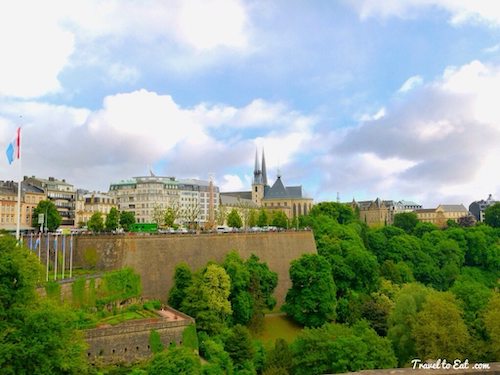
The recorded history of Luxembourg begins with the acquisition of Lucilinburhuc (today Luxembourg Castle) situated on the Bock rock by Siegfried, Count of Ardennes, in 963 through an exchange act with the Abbey of St Maximin in Trier. Around this fort, a town gradually developed, which became the center of a state of great strategic value. In the 14th and early 15th centuries, three members of the House of Luxembourg reigned as Holy Roman Emperors. In 1437, the House of Luxembourg suffered a succession crisis, precipitated by the lack of a male heir to assume the throne, which led to the territory being sold by Duchess Elisabeth to Philip the Good of Burgundy.
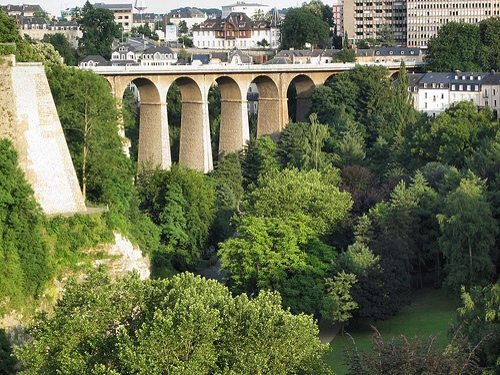
The Passerelle bridge was built between 1859 and 1861 to connect the city centre with Luxembourg’s new railway station, which was located away from the city center so as to not detract from the defensive capabilities of the city’s fortress. This is the bridge you will walk over to get to the old city or Ville Haute quarter if you come by train.

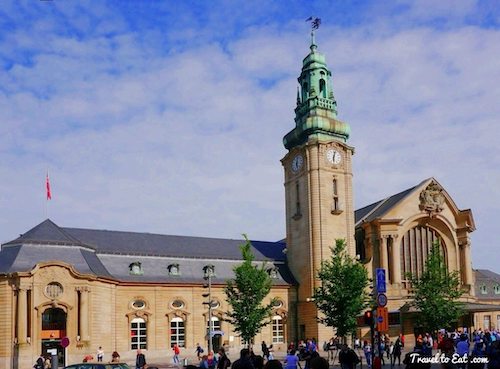
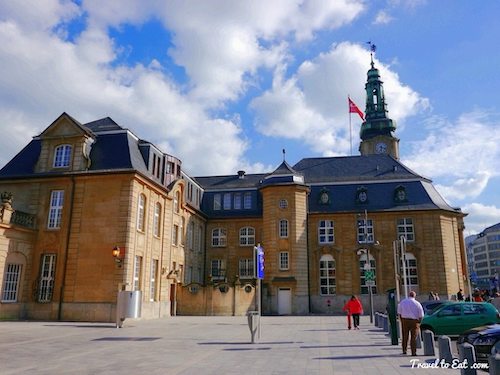
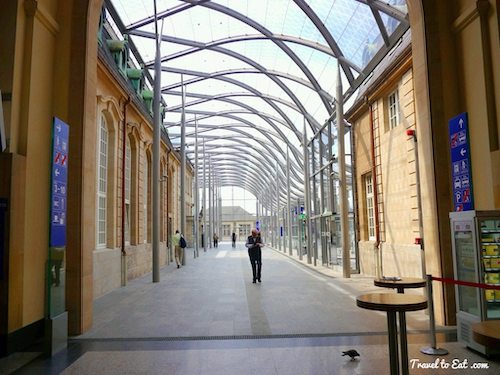
Gare, or the station district, is centered around the central train station. The station itself, built in 1907, is a beautiful historical monument, while the neighborhood surrounding it is a bustling maze of shopping, dining, entertainment, and business activity. I would also mention it is a seedy neighborhood of nightclubs, tattoo parlors and scary looking people.
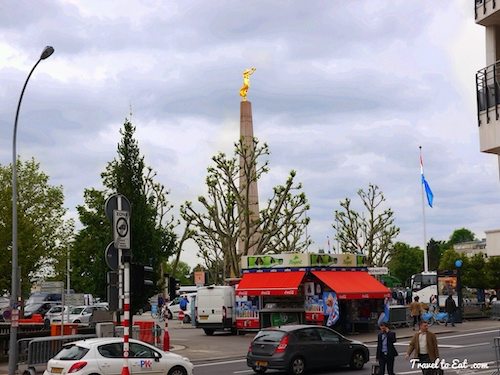
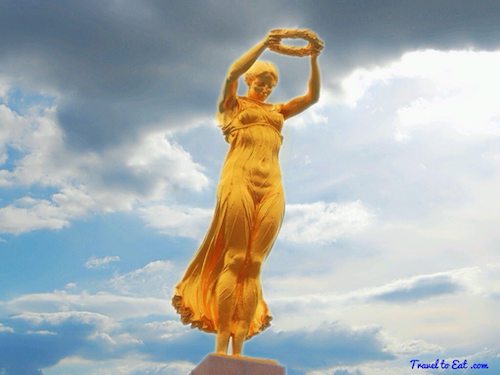
The Monument of Remembrance, usually known by the nickname of the Gëlle Fra (Luxembourgish for “Golden Lady”), is a war memorial in Luxembourg City. It is dedicated to the thousands of Luxembourgers who volunteered for service in the armed forces of the Allied Powers during World War I. The Gëlle Fra is situated in Constitution Square, in the Ville Haute quarter of central Luxembourg City.

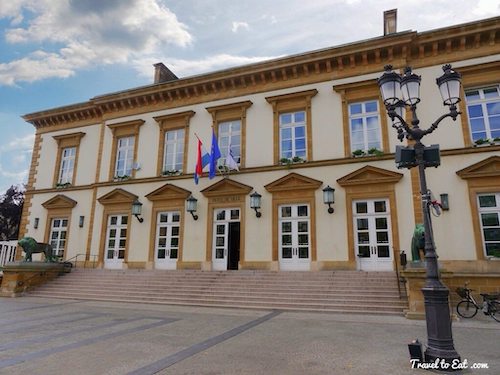
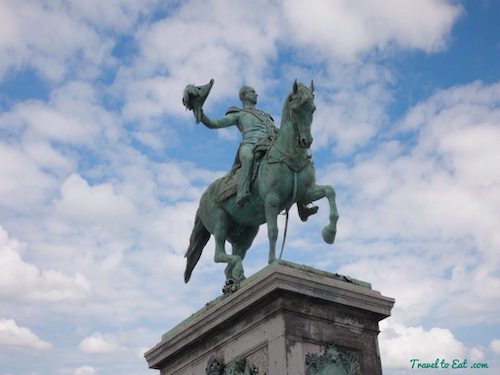
Place Guillaume II is the town square in Luxembourg City in the Ville Haute quarter. It is colloquially known as Knuedler, from the Luxembourgish language’s word for ‘knot’, referring to the knot in the belt worn by Franciscan friars. The square was originally the site of a Franciscan monastery, hence the colloquial name. However, in 1797, during the French Revolutionary Wars, the monastery was dispossessed by occupying French soldiers. In 1804, the visiting Napoleon presented Place Guillaume II to the city as a gift. In 1829, plans were put in place to build a new town hall on the square, based upon the plans of Belgian architect Justin Remont. That same year, the deconstruction of the former monastery was completed, the material from which was used in the new building. William II (Guillaume in French) of the Netherlands (1792-1849) was from 1840 to 1849 the second king of the Netherlands, Duke Limburg and Grand Duke of Luxembourg. Although personally conservative, he showed restraint and granted a new more liberal constitution in 1848, after fear of revolutions erupting across Europe. This constitution is still in force today, with some modifications.
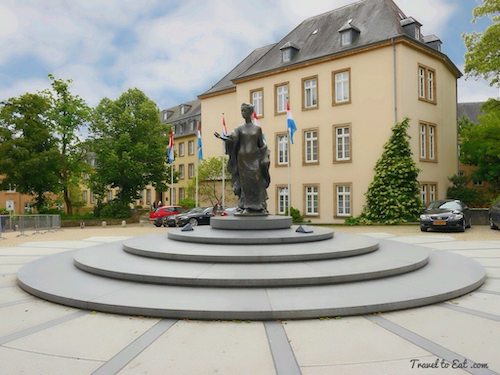
Charlotte, Grand Duchess of Luxembourg (1896-1985), reigned from 1919 to 1964. During the German occupation of Luxembourg in World War II, Charlotte, exiled in London, became an important symbol of national unity.
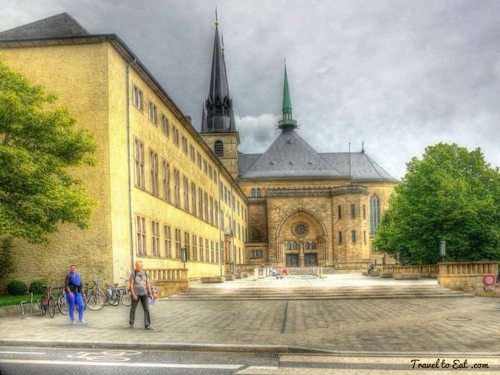
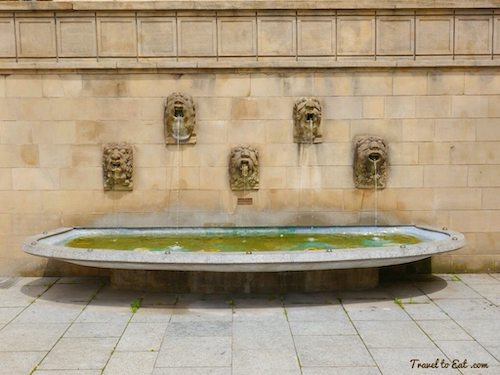

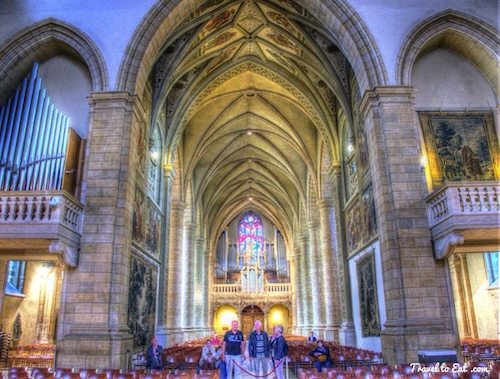
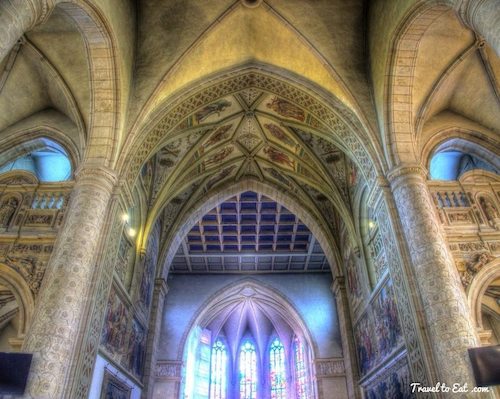
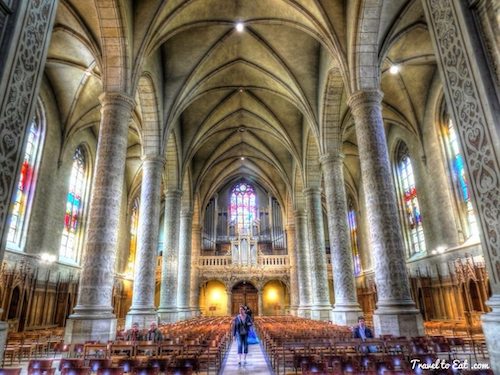
The oldest part of the Luxembourg Cathedral of Our Lady, Comforter of the Afflicted, is in fact the church of the former Jesuit College. The plan of the church was drawn up by Brother Jean du Blocq (1583-1656) from the Monastery of Tournai. The builder was Ulrich Job from Lucerne, Switzerland. The stonework of the church (except the upper part of the belfry) was entrusted to him. The ornamentation of the columns, a decorative element characteristic of the architecture of the Jesuit church in Luxembourg, was also made in his workshop. The sculptor Daniel Müller, an immigrant from Freiberg in Saxony, also made a decisive contribution to the artistic design of the church. In 1815 the Congress of Vienna created the Grand Duchy. In 1870 Pope Pius IX proclaimed it a self-governing diocese and so the Church of Notre-Dame became a cathedral.
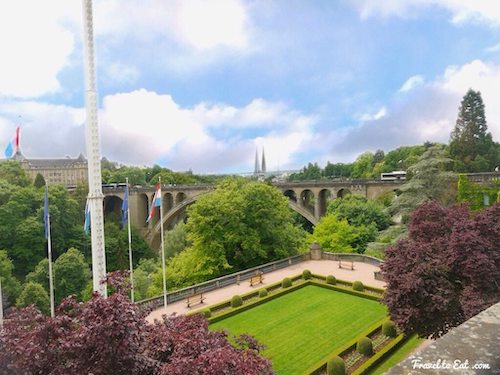
The Adolphe Bridge is an arch bridge that was built from 1889 until 1904. After Luxembourg City expanded to the south, a new bridge was necessary. The bridge takes road traffic across the Pétrusse river, connecting Boulevard Royal, іn Ville Haute, tо Avenue de la Liberté, іn Gare where the train station is. The bridge was named after Grand Duke Adolphe, who reigned Luxembourg from 1890 until 1905, and was the first monarch to hold the title not in personal union with another. Although it is now over 100 years old, it is also known as the New Bridge by people from Luxembourg City. It has become an unofficial national symbol, representing Luxembourg’s independence.
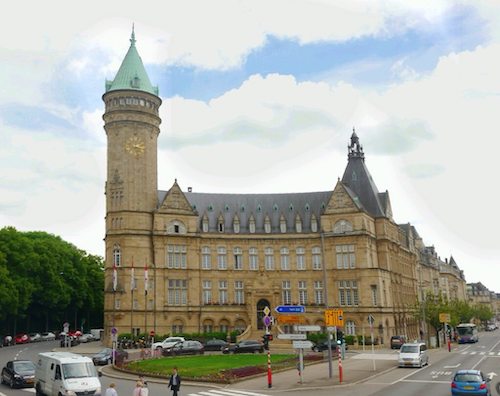
On the other side of the bridge is this building. The European Coal and Steel Community (ECSC) was a six-nation international organization serving to unify democratic countries of Europe during the Cold War and create the foundation for the modern-day developments of the European Union. The ECSC was first proposed by French foreign minister Robert Schuman on May 9, 1950 as a way to prevent further war between France and Germany. He declared his aim was to “make war not only unthinkable but materially impossible.” Europe’s first supranational community, was formally established by the Treaty of Paris (1951), signed not only by France and West Germany, but also by Italy and the three Benelux states: Belgium, the Netherlands and Luxembourg. Between these states the ECSC would create a common market for coal and steel. The ECSC was governed by a “High Authority”, checked by bodies representing governments, MPs and an independent judiciary. The building shown above was the headquarters for the High Authority (the predecessor to the European Commission) which was a nine-member executive body which governed the community.
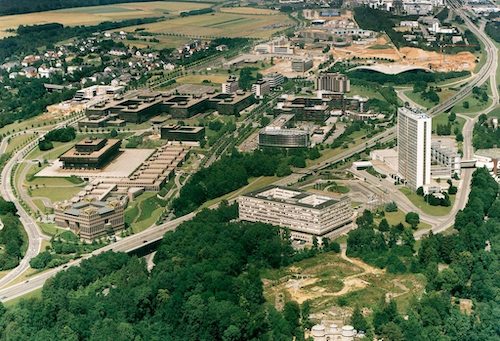
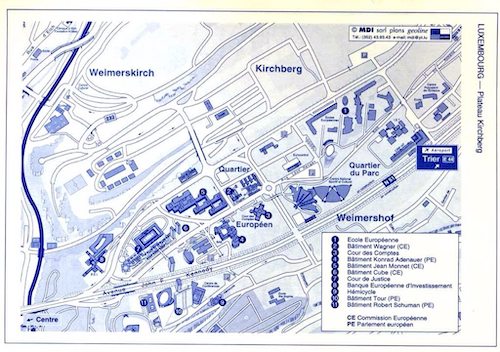


The once essentially rural area of 60 hectares on the Plateau de Kirchberg, fringed by valleys, only half a kilometer east of the capital city center, experienced its first serious jolt in 1951 when Luxembourg was chosen as the headquarters of the European Coal and Steel Community Expansion in the European Community and attracted additional European institutions in subsequent stages. Some of these were placed in Luxembourg, which ultimately overloaded the office space capacity available within the historic city center. The state met this emergency by compulsorily purchasing the Kirchberg land and in 1961 passed an act commissioning the Fonds d’Urbanisation el d’Aménagement du Plateau de Kirchberg to plan the new urban district. The Pont Grande Duchesse Charlotte, built in 1963 to plans by Egon Jux and called the Red Bridge by the local people, spans the Alzette valley and links the center of historic old Luxembourg City, Ville Haute, to the new Kirchberg buildings. This is about the worst land development I have ever seen. It is a corporate ghetto without any amenities, cafés, houses etc. except for one Sofitel Hotel. Without a car this is not tourist land, even the tour buses speed up to get away.
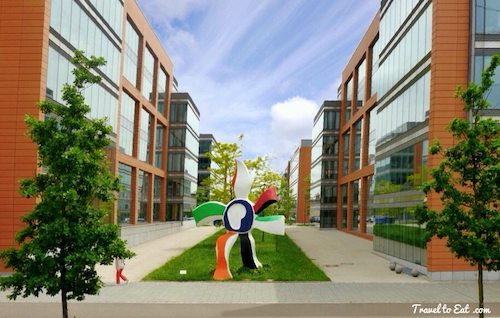
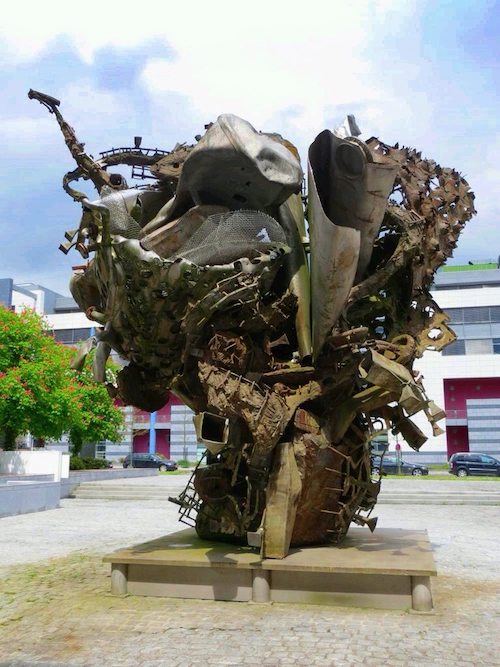
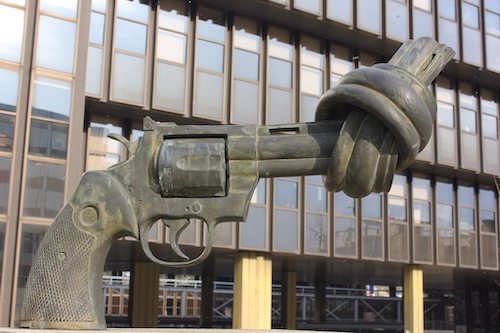
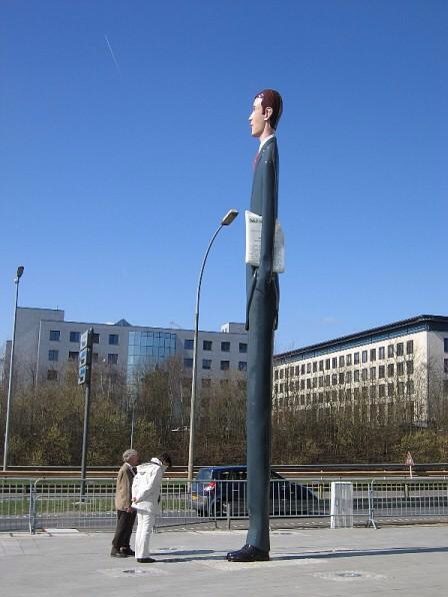
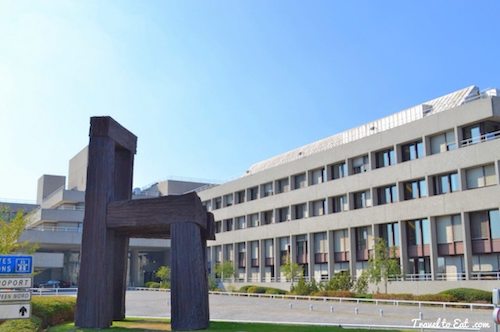

There is a fair amount of monumental modern art hidden out in the Kirchberg Plateau. Bank edifices are highlighted by numerous artworks exhibited in front of the buildings. American artist Richard Serra built his 20 meter high, tower-like sculpture “Exchange” in 1996 from seven slabs of Corten steel weighing just under 38 tons, and they put it in the middle of nowhere. I think the piece would be more at home in an urban setting as for example “Fulcrum” at Liverpool street station in London.
“I think if you want to make art, at some point you have to suspend judgment, and you have to involve yourself with play and not worry about the outcome.” – Richard Serra
Non-Violence is a bronze sculpture by Swedish artist Carl Fredrik Reuterswärd of an oversized Colt Python .357 Magnum revolver with a knotted barrel and the muzzle pointing upwards. There are currently 16 copy sculptures all around the world, including one in Luxembourg City. Outraged by the murder of his close friend John Lennon in 1980, Reuterswärd produced a sculpture that promotes tolerance and peace. While the original artwork was bought by Luxembourg’s government and offered to the United Nations headquarters in New York, where it currently lies on display since 1988, the smaller bronze duplicate of a 45 caliber handgun in Kirchberg remains one of the few ”Non Violence” originals in the world. The “La grande fleur qui marche” by Giovanni Teconi after Fernand Léger is a copy. The Sarreguemines just looks to me like a pile of junk instead of the swirling smoke it is supposed to represent.
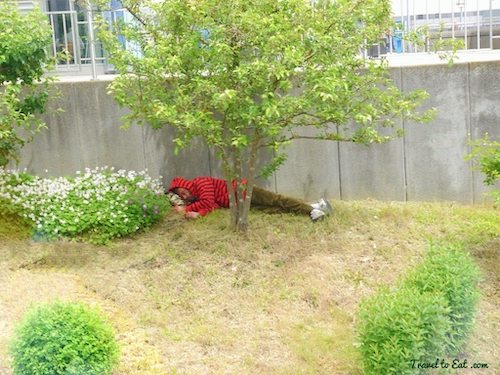
I did not like Luxembourg despite the sometimes lovely views that I showed above. Luxembourg has the highest GDP per capita in the EU in 2012 by a wide margin ($79,785) and second highest in the world but one in seven people in Luxenbourg are in poverty. Young people aged 15-24 in Luxembourg face an unemployment rate of 16.8%. There are a lot of homeless and aimless young people in Luxembourg, and I suspect the official figures are false.
I also find the elitist attitude toward censorship of art and scholarship to be disturbing. The policy of no photography in Luxembourg museums suggests that they have adopted the attitude that you can read the book in the library but cannot take it home to study. This policy is very suggestive of the idea that you can just buy art, that it is a thing. Art is the presentation of an idea, ideas and thought cannot, and should not be bought and sold, they should be communicated to lead to new ideas. Even the archaeologic material recently found is hidden from public study by a no camera policy. I spent my life doing research and publishing/presenting the ideas for free, to anyone who was interested. Knowledge grows by collaboration, not isolation.
The public art is hidden in places that are not contextually appropriate for the art and/or are copies or a committee consensus of artistic merit. While Luxembourg may be appropriate for a day visit, I would personally not return.
[mappress mapid=”82″]
References:
Luxembourg site: http://www.lcto.lu/en/index/
Richard Serra Artcyclopedia: http://www.artcyclopedia.com/artists/serra_richard.html
Public Art in Luxembourg: http://www.academia.edu/233087/Luxembourg._Art_public_dune_capitale
Art in Kirscherg: http://www.wort.lu/en/view/explore-kirchberg-s-best-kept-sculpture-secrets-512b8653e4b0e3da456a7f2a
Roxana Mironescu: http://roxanamironescu.wordpress.com/tag/non-violence/
Homeless in Luxembourg: http://www.youtube.com/watch?v=jkTXxMB72t8
Wort, Poverty in Luxembourg: http://www.wort.lu/en/view/poverty-could-happen-to-anyone-in-luxembourg-515bd63fe4b0bd54e4d1d2bd
OECD: http://www.oecdbetterlifeindex.org/countries/luxembourg/
Richard Serra: https://www.artsy.net/artist/richard-serra/

